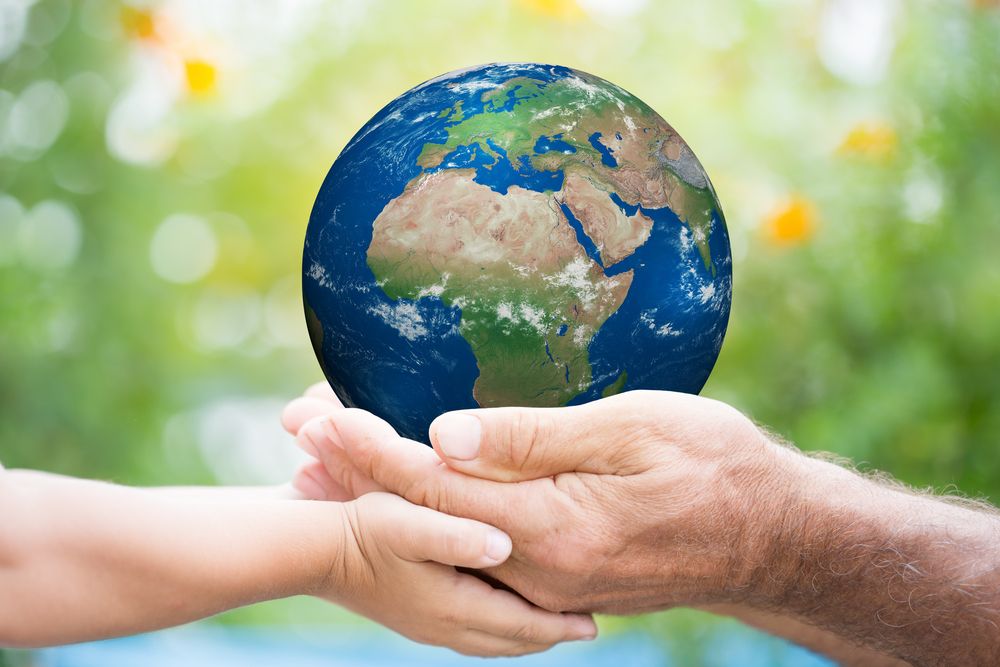
It's a day to celebrate the most famous mother of all — Mother Earth. This Monday (April 22) marks the 43rd Earth Day, with more than 1 billion people in 192 countries expected to participate in activities this year.
Though Earth Day is mainstream now, its roots go back to the radical 1960s. So as people break ground for a tree planting or take a few hours to recycle their old laptops, LiveScience looks back at the role Earth Day played in environmental change. From its hippie roots to its global reach, here are five fun facts about Earth Day.
1. Green roots
Earth Day got its start in the wake of the Vietnam War protests of the 1960s. After visiting the site of an oil spill near Santa Barbara, Calif., in 1969, Sen. Gaylord Nelson, a Wisconsin Democrat, envisioned a way to mobilize a grassroots movement to raise the profile of environmental issues, modeled after Vietnam War teach-ins. His idea spread and people held rallies in cities throughout the country on April 22, 1970. [SOS! The 10 Worst Oil Spills]
2. Political impact
Though Earth Day may now be synonymous with small-scale tree planting and volunteer cleanup projects, the first Earth Day actually had its sights set on bigger political projects. Earth Day demonstrations created public support for the creation of the Environmental Protection Agency, authorized by Congress in December 1970. Earth Day also contributed to the passage of the Clean Water, Clean Air and Endangered Species acts.
3. Equinox day
Sign up for the Live Science daily newsletter now
Get the world’s most fascinating discoveries delivered straight to your inbox.
There are actually two Earth Days — the April 22 holiday and the one celebrated on March 20, the first day of spring in the Northern Hemisphere and the autumnal equinox in southern latitudes. To this day, at the exact moment of the equinox, when the sun crosses the plane of the equator and day and night are equal length, the Japanese Peace Bell is rung at the United Nations headquarters in New York City, followed by two minutes of silent prayer or meditation. The Equinox was chosen as a symbol of harmony in nature and an appropriate time to dedicate efforts to peace and care of the Earth.
4. Global Movement
Earth Day may have been conceived in 1970, but it didn't truly go global until 1990. That year, more than 200 million people participated in environmental activities in more than 141 countries. This year, more than 1 billion people are expected to participate in 192 countries.
5. Other holidays
Nelson originally chose April 22 because it didn't seem to coincide with other big holidays in the United States. However, the date was once a big deal in the Communist Soviet Union: it was also the birthday of Vladimir Lenin.
Follow Tia Ghose on Twitter @tiaghose. Follow LiveScience @livescience, Facebook & Google+. Original article on LiveScience.com.

Tia is the managing editor and was previously a senior writer for Live Science. Her work has appeared in Scientific American, Wired.com and other outlets. She holds a master's degree in bioengineering from the University of Washington, a graduate certificate in science writing from UC Santa Cruz and a bachelor's degree in mechanical engineering from the University of Texas at Austin. Tia was part of a team at the Milwaukee Journal Sentinel that published the Empty Cradles series on preterm births, which won multiple awards, including the 2012 Casey Medal for Meritorious Journalism.











